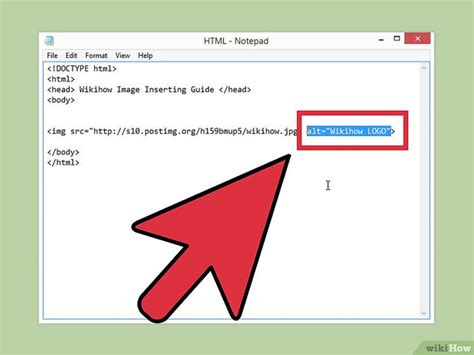How to Insert a JPG Logo into Your HTML
Adding your logo to your website is crucial for branding and recognition. This guide provides a straightforward method for inserting a JPG logo into your HTML, ensuring your website looks professional and polished. We'll cover the basic HTML, best practices for image optimization, and alternative approaches for handling different scenarios.
The Basic HTML for Embedding a JPG Logo
The simplest way to add a JPG logo to your HTML is using the <img> tag. This tag requires a src attribute specifying the path to your image file. Let's explore:

-
src="images/logo.jpg": This attribute points to the location of your logo file. Make sure the path is correct relative to your HTML file. If your logo is in the same folder as your HTML, you can simply uselogo.jpg. If it's in a subfolder called "images," useimages/logo.jpg. -
alt="Your Company Logo": Thealtattribute is crucial for accessibility and SEO. It provides alternative text for screen readers and displays if the image fails to load. Use descriptive text accurately reflecting your logo's content.
Best Practices for Image Optimization
Optimizing your logo JPG will improve your website's loading speed and overall performance. Consider these tips:
1. Use the Right Dimensions:
- Resize your image: Before uploading, resize your logo to the appropriate dimensions for its intended use on your website. A large, unnecessarily high-resolution logo will significantly slow down your page load time. Tools like Photoshop or GIMP are great for resizing.
2. Compress Your JPG:
- Reduce file size: Use online tools or software to compress your JPG without significantly impacting image quality. Smaller file sizes mean faster loading times. Many free online tools are available for JPG compression.
3. Consider File Format Alternatives:
- WebP for superior compression: While JPG is widely supported, consider using WebP if your target audience's browsers support it. WebP offers superior compression, leading to smaller file sizes and faster loading. However, ensure browser compatibility before switching.
Adding Style with CSS
While the basic <img> tag works, you can enhance its appearance using CSS. This allows for precise control over your logo's placement, size, and styling:

This CSS code centers the logo and sets its width, maintaining its aspect ratio. You can adjust the width value to fit your design.
Troubleshooting Common Issues
- Image not showing: Double-check the file path in the
srcattribute. Ensure the JPG file exists in the specified location and the path is correct. - Image too large: Resize the image before uploading. Large images significantly slow down your website.
- Image blurry: Ensure the image resolution is appropriate for its intended size on the webpage. Avoid scaling up low-resolution images.
By following these steps and best practices, you'll seamlessly integrate your JPG logo into your HTML, improving your website's appearance and performance. Remember consistent branding and optimized images are crucial for a positive user experience.
